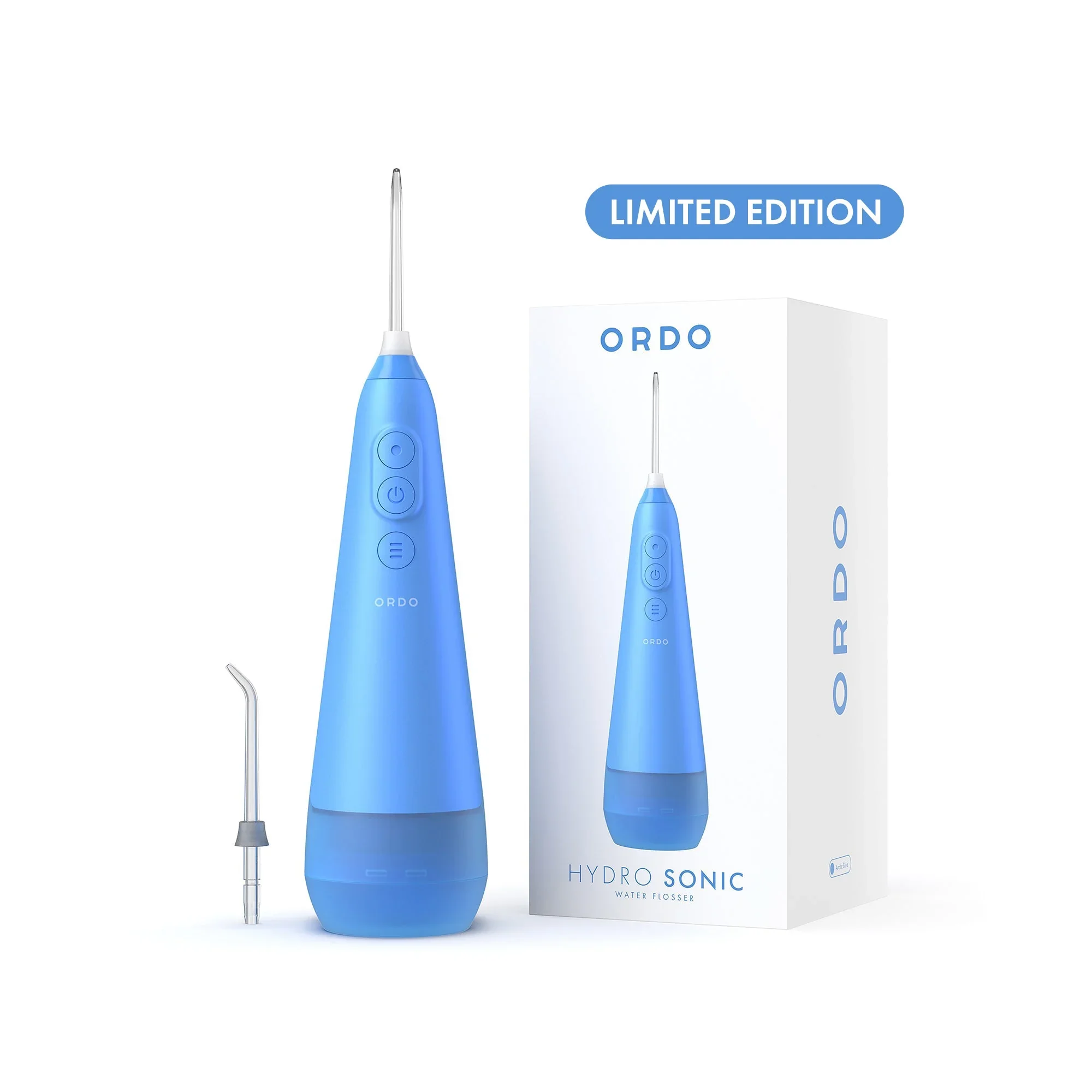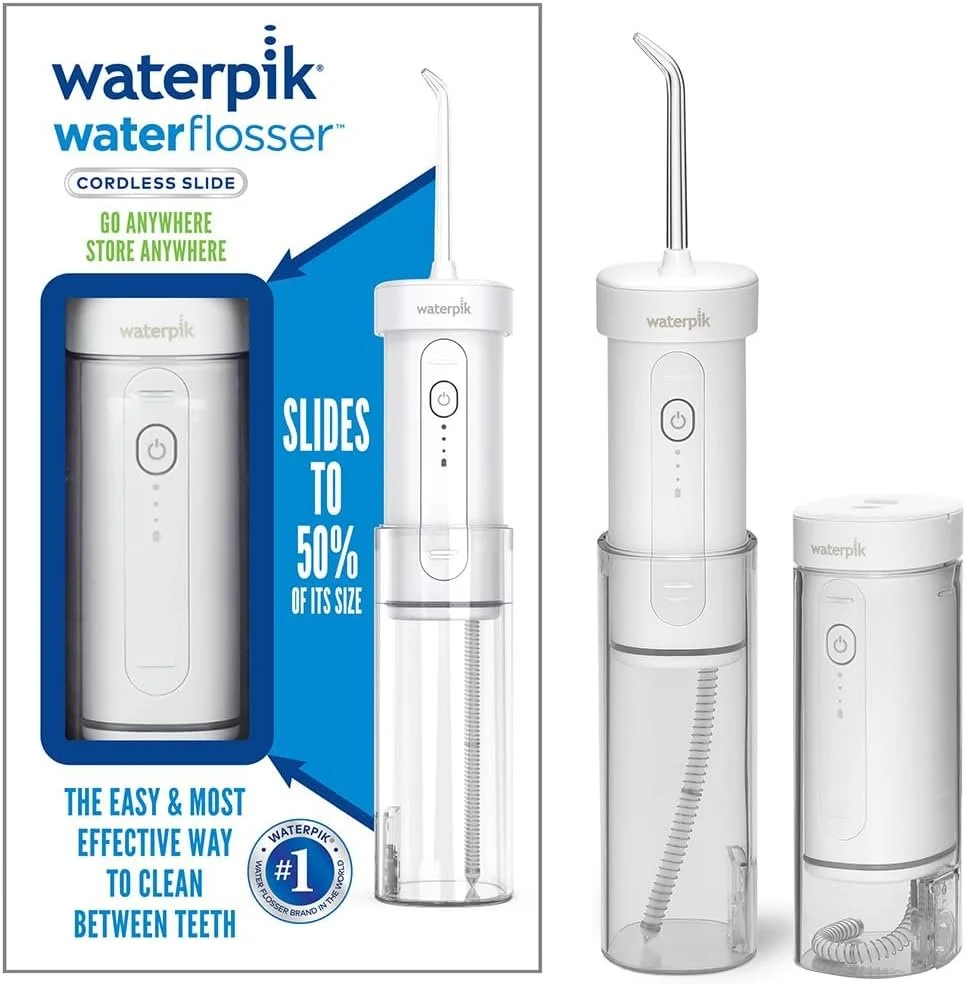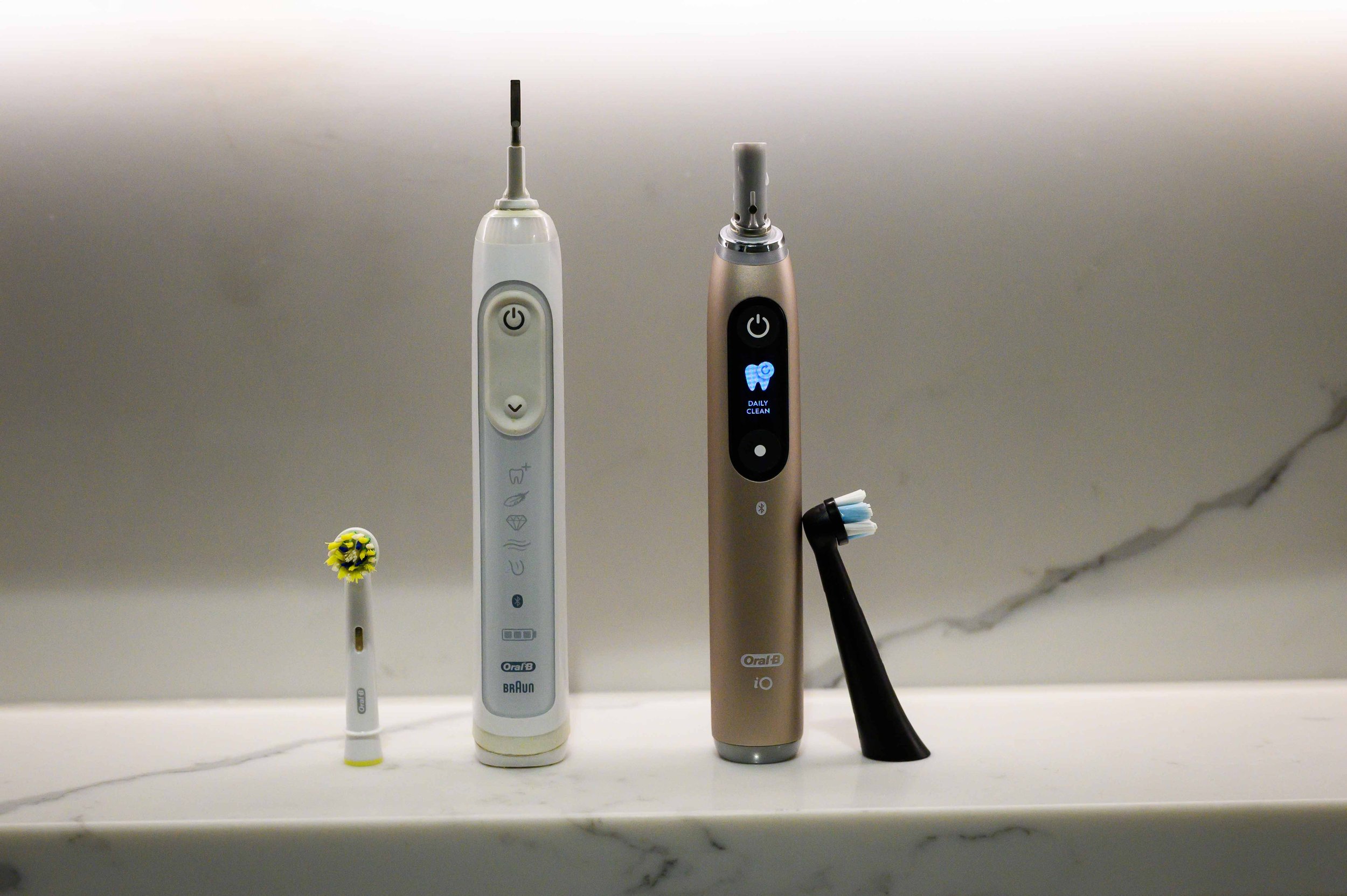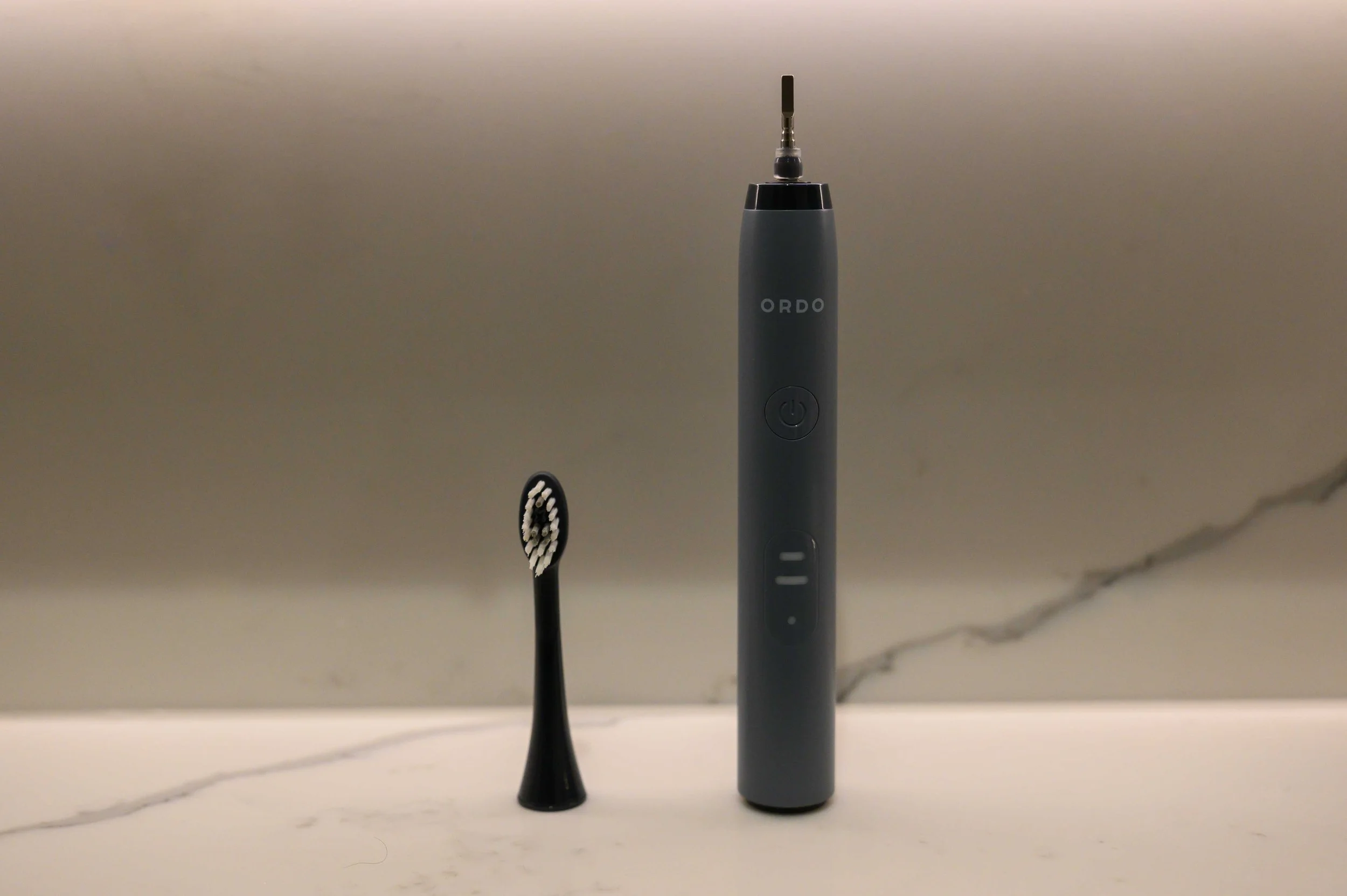The Best Water Flossers for 2026 (UK)
Last Updated: 29th December 2025 | Medically reviewed by Dr Zaeem JafriWater flossers have become incredibly popular over the last few years, and patients are constantly asking me if they’re actually any good. It seems like people are always looking for a way to avoid using traditional tape floss … and honestly, I get it.
Using traditional tape floss can be tricky, annoying, and fiddly, especially when you’re trying to reach those back teeth and clean under bridges or around implants.
However, brushing alone isn’t enough, and you need to clean between your teeth to avoid plaque buildup. If you don’t, you will significantly increase the risk of developing tooth decay or gum disease.
The part in between your teeth where they touch is known as the ‘contact point’. Your toothbrush can not clean this area, and that is where 90% of tooth decay occurs.
A few of the waterflossers we have tried and tested at Nova Smiles
Water flossers can be extremely helpful for maintaining good oral hygiene and cleaning those tricky in-between spaces. They’re especially useful for people with braces, implants, bridges, or anyone who struggles with the dexterity or grip strength needed for tape floss.
As with most things in dentistry, there’s no need to get too caught up in the small details — good habits matter far more than high-tech features. Oral health is built on routine. If you’re brushing twice a day with the right technique, using a water flosser for a minute a day, and keeping an eye on your diet, you’re already covering the essentials for a healthy mouth.
When choosing a water flosser, focus on finding one that you’ll actually use every day, not one that looks great but ends up sitting on the bathroom shelf. There’s no benefit in having the most expensive and advanced device if it only comes out once a week.
That said, below we’ve reviewed some of the most popular water flossers on the market, sharing our favourites and highlighting the key features to look for when choosing the best one for you.
Most of these products are available for quick delivery on Amazon. If you use our links to buy them, we may earn a little money, but be assured that this article contains our honest opinions.
Summary
The best water flosser if you have enough space: Waterpik Ultra Professional (£90.00)
The best cordless water flosser: Ordo Hydro Sonic (£59.99)
The best option water flosser for travel: Waterpik Slide (£59.99)
The best budget option: Whites Beaconsfield Dental Water Flosser (£19.99)
As you can tell, we like to recommend water flossers made by Waterpik. The main reason is that in most large-scale studies on water flossers, Waterpik has been the device used by clinicians and researchers. As a result, it’s the only water flosser with a strong scientific evidence base supporting its effectiveness. Waterpik are also the most established water flosser brand on the market.
That said, the alternatives listed below are also excellent options, and we’re confident they’ll do a great job for most people.
How Have We Tested These Water Flossers?
The water flossers featured on this page have all been tested by Dr Zaeem Jafri, our founder and expert dentist. And are a result of personal opinion.
None of the water flossers featured on this page are going to be bad for your teeth and gums, but they will all have individual characteristics that suit certain people, and our goal is to help you understand what might be right for you.
Key features we have considered
Cost
Cleaning power
Ease of use and space required
Travel Features
Scientific studies we have read
Safety of a water flosser: a literature review (Compend Contin Educ Dent)
Relevance of the water flosser: 50 years of data (Compend Contin Educ Dent)
Comparing the effectiveness of water flosser and dental floss in plaque reduction among adults: A systematic review (J Indian Soc Periodontol)
The Best Water Flossers in the UK
Below is the list of our dentist-recommended water flossers (remember, it’s all about personal preference and budget!).
** A note about pricing: These water flossers fluctuate in pricing all the time, so the prices listed below are approximate costs. Oral-B and Philips brushes are never really sold at their RRP, so just ignore those inflated costs and discounts. **
Waterpik Ultra Professional (£90.00)
Ordo Hydro Sonic (cordless) (£59.99)
Panasonic Series 800 (cordless) (£79.99)
Waterpik Cordless Advanced (£69.99)
Waterpik Cordless Slide (£59.99)
Whites Beaconsfield (slide) (£19.99)
Waterpik Ultra Professional
Best water flosser based on performance and research
The Waterpik Ultra Professional is the most long-standing and well-researched water flosser on the market. Waterpik still holds many patents relating to water flossers, and many scientific studies on water flossers have used this model.
If you have enough space in your bathroom for a countertop device, this is our top recommendation. The tank holds enough water for a full cleaning session, and the unit includes a one-minute timer with a 30-second pacer to help you clean both the upper and lower arches evenly. It also offers multiple pressure settings, allowing you to find the level that feels most comfortable for you.
Buy it from Amazon (£59.99)
Ordo Hydro Sonic Water Flosser
Best cordless option
The Ordo Hydro Sonic water flosser offers all the benefits of a cordless device, with the added convenience of built-in USB C charging. No extra outdated cables needed.
You can lock the buttons to prevent accidentally spraying water all over your bathroom mirror and it offers a continuous mode as well as a pulse mode.
It also features a clever storage compartment inside the water tank, perfect for keeping your tips neatly tucked away when not in use. It comes in a variety of colours too, allowing you to add a bit of style and personality to your oral hygiene routine.
Buy it from Amazon here (£59.99)
Panasonic Series 800
Alternative cordless option
The Panasonic water flosser is a well-designed cordless option with a water tank that holds enough for a full 60 seconds of use, so there’s no need to stop and refill midway through.
The tank can also be refilled from the bottom, helping to reduce spillage when topping up with water. It’s rechargeable via USB C too, making it convenient for both home and travel use.
Buy it on Amazon - £79.99
Waterpik Cordless Advanced
Cordless option with Waterpik branding
The Waterpik Cordless Advanced is ideal for smaller bathrooms or if you’d rather not have a countertop unit on display.
It offers several pressure settings and a water tank that lasts around 45 seconds, so you may need to refill it once during a full flossing session, but this is quick and easy to do. The Cordless Advanced maintains Waterpik’s excellent reputation for quality.
The only issue is it comes with a magnetic charger which requires a USB-A socket which will very quickly be outdated.
Buy it from Amazon (£69.99)
Waterpik Cordless Slide
Best water flosser for travel
The Waterpik Cordless Slide is the best option for people who travel frequently and want something compact. Its sliding feature is brilliant, as the device collapses into an easy-to-store, travel-friendly size, with the water chamber doubling as storage for the flosser mechanism.
It’s a clever design that makes it ideal for fitting neatly into a travel bag.
Buy it on Amazon (£59.99)
Whites Beaconsfield
Best budget option
The Whites Beaconsfield water flasser is the best option if you’re on a budget. At just £20, it offers great value and works similarly to the Waterpik Slide above.
It’s a compact, rechargeable device (via USB C) that fits easily into a travel bag and can also be used at home. It’s the cheapest reliable water flosser I’ve been able to find.
Buy it on Amazon (£19.99)
Other Water Flossers We Have Tested
Below is a list of other toothbrushes that we have tested but don’t think fit into our list above.
Philips Sonicare Cordless Power Flosser 3000 (£93) - Although it looks great, I’ve found the grip isn’t very comfortable in practice. It feels a bit slippery, and the button placement means I often end up pressing them by mistake — either changing the settings mid-use or accidentally firing water around the bathroom. Overall, I don’t find it the easiest flosser to handle, and given that it’s more expensive than the other options, I’ve chosen not to include it in my main recommendations.
Spotlight Water Flosser (£120) - This water flosser is similar to the other cordless models but includes a UV light designed to disinfect the water chamber. However, there’s no evidence to suggest this feature provides any benefit to your health, and some reviews mention the light failing over time. Given the price, there are better options available.
Oral B Aquacare 6 (£68.99) - It’s not the most attractive design, and if you read the reviews on the Oral-B website, several users report issues with the battery failing quickly, the pump breaking down, and the overall pressure being quite weak due to design flaws.
Amazon brands - There are several water flossers on Amazon sold under various brand names (Binefa, Hangsun, Insmart, Bitvae), all priced around the £20 mark, which makes them a tempting option. However, it’s worth being cautious with these Amazon brands. Many are white-label products manufactured at scale in China. That in itself isn’t necessarily a problem, but if something goes wrong, customer support can be poor. These devices often don’t last long, and the companies behind them can quickly go out of business, rebrand, or change their listings altogether.
That’s why Whites Beaconsfield is a good choice. They have an established website and a recognised brand, and at £20, they offer great value. There’s really no need to take a gamble on the unknown Amazon brands.
FAQs About Water Flossers
Are water flossers better than regular flossing?
Water flossers and traditional floss both help clean between your teeth, but they work differently. Flossing physically scrapes plaque from the tooth surface, while water flossers use a pressurised stream of water to flush out food and bacteria along the gumline. Studies show water flossers can be as effective as floss at reducing bleeding and inflammation, though there’s no strong evidence that any particular brand or pressure setting is superior. The most important factor is consistency — whichever method you’re more likely to use daily is the best choice for maintaining healthy gums.
How do you use a water flosser properly?
Fill the water tank with lukewarm water, select your preferred pressure setting, and lean over the sink before switching it on. Place the tip just above the gumline and aim between the teeth, following the curve of your mouth and pausing briefly between each tooth. Keep your mouth slightly open so the water can flow out easily. Most people take about a minute to clean their whole mouth. It’s best to use your water flosser once a day, ideally before brushing in the evening.
Cordless vs Countertop Water Flossers
Countertop water flossers generally perform better because their larger pumps and motors deliver more power and consistent pressure. They also have bigger water tanks, meaning you can floss for a full minute without needing to refill. However, they take up more space and might not suit smaller bathrooms or those who prefer a minimal aesthetic. In those cases, cordless models are an excellent choice — they’re compact, easy to store, and far more likely to be used regularly, which ultimately matters more for maintaining good oral health.
Do dentists recommend water flossers?
Yes, many dentists and hygienists recommend water flossers, especially for people who find string floss difficult to use or uncomfortable. They’re particularly helpful if you have braces, dental implants, bridgework, or gum problems, as the water stream can reach areas traditional floss might miss.
Are water flossers safe for sensitive gums?
Yes, water flossers are generally safe for sensitive gums when used correctly. Start on the lowest pressure setting and gradually increase it as your gums get used to the sensation. If your gums bleed regularly or feel sore, stick to a softer setting and check in with your dentist to rule out any underlying gum disease.
Where should you store water flossers in smaller bathrooms?
If space is limited, look for a cordless model that’s compact enough to fit in a drawer or cabinet. You can store it upright on a small countertop tray, inside a vanity unit, or even on a floating shelf. Empty the tank after each use to prevent limescale build-up, and keep it dry. Some people also keep their water flosser in the shower if it’s waterproof.
Why should you trust Nova Smiles’ reviews?
Our reviews are written by a practising dentist (Dr Zaeem Jafri) who has years of clinical experience, ensuring every product or treatment we recommend is backed by real-world knowledge and evidence-based research. Each review is guided by what genuinely works for patients, focusing on practicality, ease of use, and long-term results rather than marketing claims. We also incorporate patient feedback and everyday experience from the clinic to give you balanced, trustworthy advice that reflects how these products perform in real life.
Why are we so obsessed with USB-C charging?
It might sound trivial, but convenience is one of the biggest factors in whether people actually use their oral health devices. We often hear patients say, “I’ve got an electric toothbrush, but it’s not charged,” which usually means it’s sitting unused. When a toothbrush or water flosser needs a unique charging cable or bulky stand, it’s easy to lose or forget about. Devices that use USB-C charging are far more practical — you can plug them into the same charger as your phone or laptop, anywhere. That simple detail makes it much easier to keep your device charged and ready to use, which in turn helps you stay consistent with your daily routine and maintain better oral health.
























